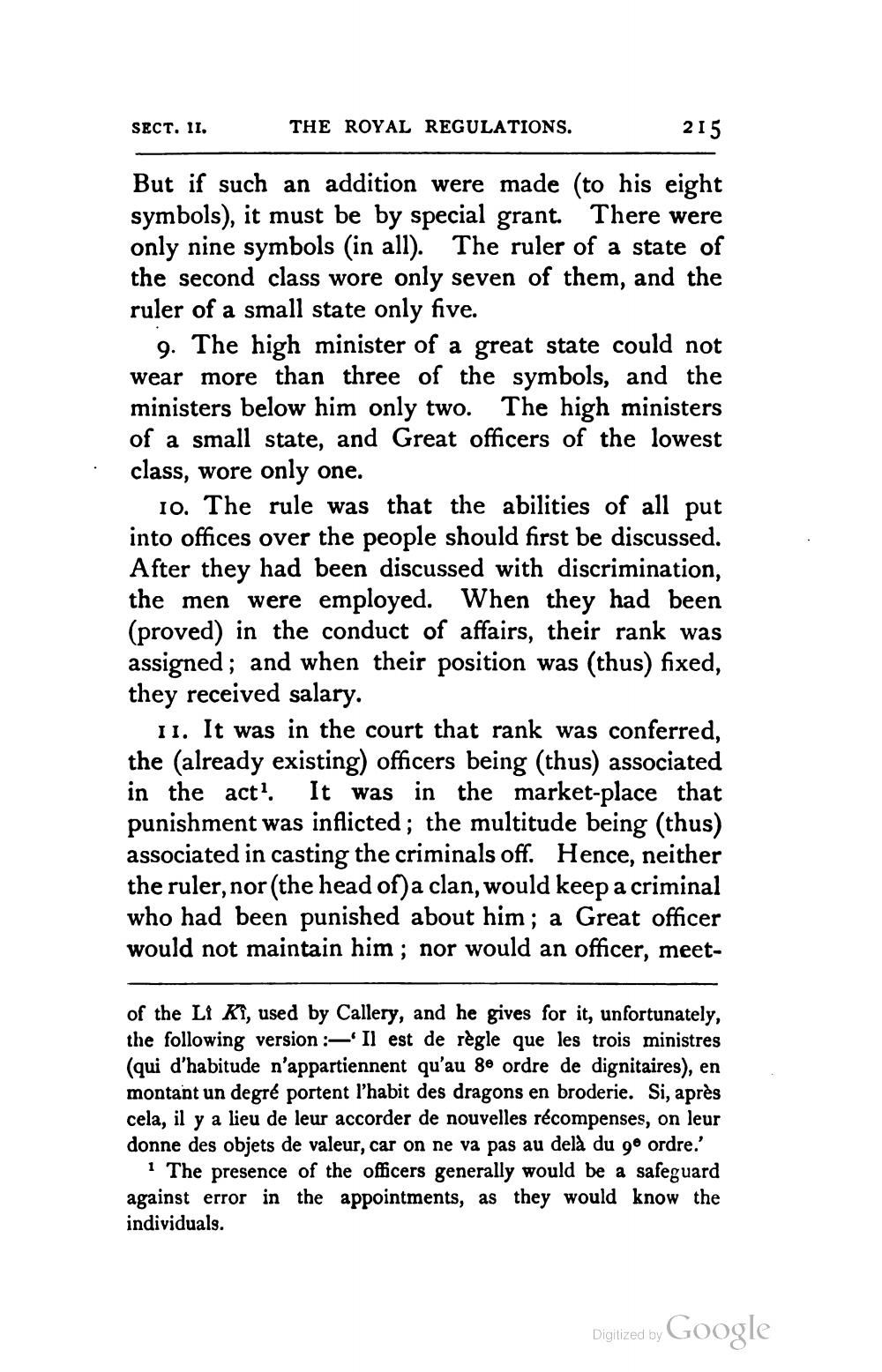________________
215
But if such an addition were made (to his eight symbols), it must be by special grant. There were only nine symbols (in all). The ruler of a state of the second class wore only seven of them, and the ruler of a small state only five.
SECT. 11.
THE ROYAL REGULATIONS.
9. The high minister of a great state could not wear more than three of the symbols, and the ministers below him only two. The high ministers of a small state, and Great officers of the lowest class, wore only one.
10. The rule was that the abilities of all put into offices over the people should first be discussed. After they had been discussed with discrimination, the men were employed. When they had been (proved) in the conduct of affairs, their rank was assigned; and when their position was (thus) fixed, they received salary.
II. It was in the court that rank was conferred, the (already existing) officers being (thus) associated in the act1. It was in the market-place that punishment was inflicted; the multitude being (thus) associated in casting the criminals off. Hence, neither the ruler, nor (the head of) a clan, would keep a criminal who had been punished about him; a Great officer would not maintain him; nor would an officer, meet
of the Li K, used by Callery, and he gives for it, unfortunately, the following version:- Il est de règle que les trois ministres (qui d'habitude n'appartiennent qu'au 8e ordre de dignitaires), en montant un degré portent l'habit des dragons en broderie. Si, après cela, il y a lieu de leur accorder de nouvelles récompenses, on leur donne des objets de valeur, car on ne va pas au delà du 9o ordre.'
1 The presence of the officers generally would be a safeguard against error in the appointments, as they would know the individuals.
Digitized by
Google




